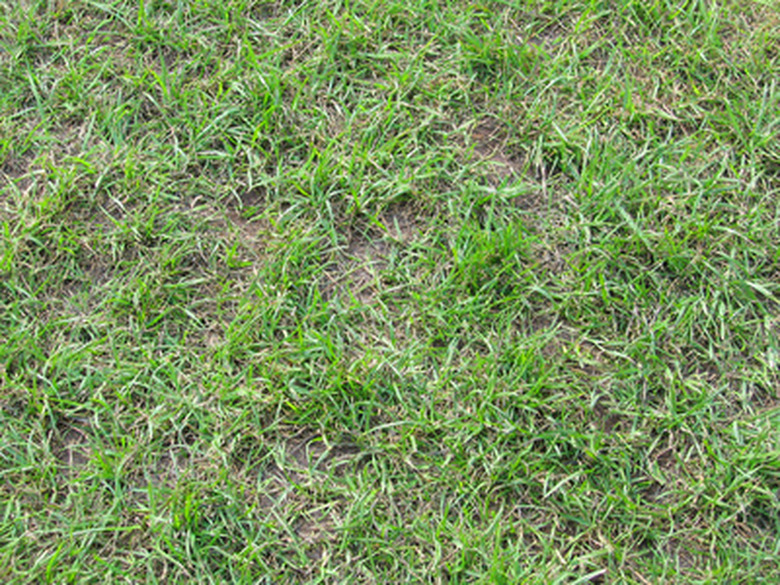Grass Root Rot
Root rot is a common problem in many lawns, especially for summer-growing grasses in areas with cool evenings. Common types of root rot include "take-all" root rot and Pythium root rot. Improving the general conditions of lawn health can help prevent and treat root rot in grass.
Identification
Root rot problems in grass often show no signs until a lawn has had root rot for several months. Above ground, root rot yields yellowing, wilting, declining grass which persists to brown patches before the grass dies completely, leaving barren areas and patchy, brown grass.
Conditions
Conditions that can harbor or exacerbate a grass root problem include poor soil drainage, incorrect fertilization, overwatering and moderately cool temperatures. Lawn diseases are most likely to occur between 50 and 70 degrees F or in grass that is cut too short or mowed too frequently.
- Root rot is a common problem in many lawns, especially for summer-growing grasses in areas with cool evenings.
- Lawn diseases are most likely to occur between 50 and 70 degrees F or in grass that is cut too short or mowed too frequently.
Pythium Root Rot
Pythium root rot produces patches of thinning grass. The leaves of the grass generally do not yellow before they thin out. The organism that causes Pythium root rot is a fungus. Pythium root rot is most present in saturated lawns with poor drainage because the wetness allows the Pythium fungal spores to spread quickly.
Take-All Root Rot
Take-all root rot is a widely feared problem in the gardening community. Like Pythium root rot, Take-all root rot is caused by a fungus. Characterized by yellowing leaves on a lawn, a take-all root rot infection means almost certain death for many types of lawn grass, particularly St. Augustine grass.
- Pythium root rot produces patches of thinning grass.
- Pythium root rot is most present in saturated lawns with poor drainage because the wetness allows the Pythium fungal spores to spread quickly.
Treatment
Root rot is difficult to treat once it shows symptoms in above-ground grass. The best care for root rot is prevention of the disease by promoting good overall grass health. Lawn care techniques like mowing at the correct height, aerating the lawn for good drainage and proper watering can help prevent root rot. Fungicides, though questionably effective on existing take-all root rot disease, are applied as a preventative measure in areas with severe root rot problems.
Mowing
To prevent root rot using proper mowing techniques, determine the ideal growing height of your species of grass, and mow the lawn when the grass is one-third taller than the ideal leaf height.
